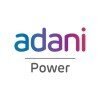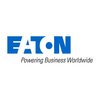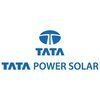
i
Torrent
Power
Filter interviews by
Torrent Power Interview Questions and Answers
89 Interview questions
PWHT is essential for alloy steels like P-91, P-22, and P-11 to relieve stresses and enhance mechanical properties.
PWHT (Post Weld Heat Treatment) reduces residual stresses from welding, preventing cracking.
For P-91, PWHT improves toughness and ductility, crucial for high-temperature applications like power plants.
P-22 benefits from PWHT by enhancing creep resistance, making it suitable for pressure vessels.
P-11 r...
Electrodes for alloy steels like P-91 and P-22 are crucial for ensuring strong welds and resistance to high temperatures.
Use low hydrogen electrodes to prevent cracking.
For P-91, E9018-B9 electrodes are recommended for their high strength.
For P-22, E8018-C3 electrodes are suitable for their toughness.
Preheat and post-weld heat treatment are often necessary.
The BDV (Breakdown Voltage) of transformer oil at 11 kV indicates its insulating strength and quality.
BDV is a measure of the dielectric strength of transformer oil.
A higher BDV value indicates better insulation properties.
Typical BDV values for transformer oil should be above 30 kV.
Factors affecting BDV include moisture content and contamination.
Regular testing of BDV is essential for transformer maintenance.
Transformers are deep learning models that excel in natural language processing tasks through self-attention mechanisms.
Transformers use self-attention to weigh the importance of different words in a sentence.
They consist of an encoder-decoder architecture, enabling tasks like translation and summarization.
BERT and GPT are popular transformer models used for various NLP applications.
Transformers can process data i...
Distribution processes involve the movement of goods from manufacturers to consumers, ensuring efficiency and effectiveness.
Supply Chain Management: Overseeing the entire flow of goods from suppliers to customers.
Logistics Coordination: Managing transportation, warehousing, and inventory control.
Order Fulfillment: Ensuring timely processing and delivery of customer orders, e.g., Amazon's same-day delivery.
Distribu...
Tables in electrical applications often use insulation materials to prevent electrical conduction and ensure safety.
Common insulation materials include PVC, rubber, and fiberglass.
PVC is widely used for its durability and resistance to moisture.
Rubber provides excellent flexibility and is often used in portable tables.
Fiberglass is used for high-temperature applications due to its thermal resistance.
Ohm's Law states that voltage equals current times resistance, forming a fundamental relationship in electrical circuits.
Ohm's Law formula: V = I × R, where V is voltage, I is current, and R is resistance.
Example: If a circuit has a voltage of 10V and a resistance of 5Ω, the current is 2A (10V = 2A × 5Ω).
Ohm's Law applies to linear resistors, where the resistance remains constant regardless of voltage and current.
...
KVL and KCL are fundamental laws in electrical engineering governing voltage and current in circuits.
KVL (Kirchhoff's Voltage Law) states that the sum of all voltages around a closed loop equals zero.
Example of KVL: In a series circuit with a 12V battery and two resistors (4Ω and 8Ω), the voltage drop across the resistors must equal 12V.
KCL (Kirchhoff's Current Law) states that the sum of currents entering a junct...
A Buchholz relay is a safety device used in oil-filled transformers to detect faults and prevent damage.
Monitors gas accumulation and oil flow in transformers.
Triggers alarms or circuit breakers during faults.
Commonly used in large power transformers.
Example: Detects overheating or short circuits.
Helps in preventing catastrophic failures.
I have 8 years of experience in the solar field.
I have worked on multiple solar projects, including residential and commercial installations.
I have experience with solar panel design, installation, and maintenance.
I have knowledge of solar inverters, batteries, and monitoring systems.
I have conducted feasibility studies and energy audits for solar projects.
I have kept up-to-date with the latest advancements in sol...
Torrent Power Interview Experiences
144 interviews found
(2 Questions)
- Q1. Transformer tests describe in brief
- Ans.
Transformer tests are conducted to ensure the transformer's performance and reliability.
Transformer turns ratio test checks the turns ratio between primary and secondary windings.
Insulation resistance test measures the insulation resistance between windings and ground.
Transformer winding resistance test measures the resistance of the windings.
Transformer polarity test checks the polarity of the windings.
Transformer ope...
- Q2. About relay & protection of power system
I applied via Walk-in and was interviewed in Nov 2024. There was 1 interview round.
(2 Questions)
- Q1. Can you elaborate on your experience?
- Ans.
I have over 10 years of experience in operations management, including leading teams, optimizing processes, and implementing efficiency improvements.
Led a team of 50+ employees in a manufacturing facility, improving production efficiency by 20%
Implemented lean manufacturing principles resulting in a 15% reduction in waste
Developed and implemented SOPs to streamline operations and ensure consistency
Managed inventory lev...
- Q2. Most expertise in topic you are
- Ans.
I have extensive expertise in operations management, process improvement, and strategic planning.
Over 10 years of experience in leading and optimizing operations in various industries
Proven track record of implementing process improvements to increase efficiency and reduce costs
Skilled in developing and executing strategic plans to drive business growth
Strong background in project management and team leadership
Certifie...
Interview Preparation Tips
I applied via Approached by Company and was interviewed in Aug 2024. There were 3 interview rounds.
(2 Questions)
- Q1. Previous experience and education
- Q2. Salary discussions
(2 Questions)
- Q1. Related to distribution
- Q2. Metering knowledge
(2 Questions)
- Q1. General discussion and communication skills
- Q2. Family background
- Ans.
I come from a supportive family that values education and hard work, which has greatly influenced my career path.
My father is an engineer, which inspired my interest in the field from a young age.
My mother is a teacher, emphasizing the importance of education and lifelong learning.
I have two siblings; my brother is pursuing a career in architecture, and my sister is studying environmental science.
Family gatherings ofte...
I appeared for an interview in Apr 2025, where I was asked the following questions.
- Q1. What do you expect from company for growth of your company
- Ans.
I seek opportunities for skill enhancement, mentorship, and a collaborative environment to foster my professional growth.
Access to training programs to enhance technical skills, such as advanced project management courses.
Opportunities for mentorship from senior engineers to gain insights and guidance on complex projects.
A collaborative work environment that encourages knowledge sharing and teamwork, leading to innovat...
- Q2. About distribution
I applied via Campus Placement and was interviewed in Aug 2024. There were 2 interview rounds.
First round was mixed question test, technical as well as aptitude question was asked in online mode. 25 aptitude questions(Easy) and 75 technical questions(moderate-hard)
(2 Questions)
- Q1. Aptitude Questions consisted time and work based, data interpretetion, logical and verbal reasoning
- Q2. Technical questions was mostly based on Power Plant Engineering, Thermodynamics & RAC & ICE
Interview Preparation Tips
I appeared for an interview in Apr 2025, where I was asked the following questions.
- Q1. Question about power system
- Q2. Question about basic electrical engineering
I applied via Approached by Company and was interviewed in Jul 2024. There were 2 interview rounds.
(2 Questions)
- Q1. Family introduction
- Ans.
I come from a close-knit family that values support, education, and community involvement, shaping my character and work ethic.
My parents instilled a strong work ethic in me; my father worked in real estate, which sparked my interest in land acquisition.
I have two siblings; my sister is an architect, and my brother is a civil engineer, both of whom inspire my passion for development.
Family gatherings are important to u...
- Q2. Educational and professional background
(2 Questions)
- Q1. Professional background
- Q2. Process of Land Acquisition and land purchase
- Ans.
Land acquisition involves identifying suitable land, negotiating with landowners, conducting due diligence, and finalizing the purchase.
Identify potential land parcels for acquisition
Negotiate with landowners for purchase terms
Conduct due diligence to assess legal and environmental aspects
Finalize purchase agreement and complete transaction
Interview Preparation Tips
I appeared for an interview in Feb 2025, where I was asked the following questions.
- Q1. What challenges did you face regarding audit, ISO certification, quality management, facilities management, transport management, and canteen management? And many more ......
- Ans.
Faced challenges in compliance, resource allocation, and stakeholder engagement across various management areas.
Audit challenges included ensuring compliance with regulations and preparing for external audits, which required meticulous documentation.
ISO certification involved aligning processes with international standards, necessitating training and buy-in from all staff members.
Quality management faced hurdles in mai...
- Q2. Administrative operation ,
I appeared for an interview in Apr 2025, where I was asked the following questions.
- Q1. Education Background
- Q2. Company Experience
I appeared for an interview in Feb 2025, where I was asked the following questions.
- Q1. Power system, electrical machine releted question
- Q2. Your project related questions
Top trending discussions






Torrent Power Interview FAQs
Some of the top questions asked at the Torrent Power interview -
The duration of Torrent Power interview process can vary, but typically it takes about less than 2 weeks to complete.
Tell us how to improve this page.
Torrent Power Interviews By Designations
- Torrent Power Executive Engineer Interview Questions
- Torrent Power Executive Interview Questions
- Torrent Power Electrical GET Interview Questions
- Torrent Power Assistant Manager Interview Questions
- Torrent Power Distribution Executive Interview Questions
- Torrent Power Graduate Engineer Trainee (Get) Interview Questions
- Torrent Power Operations Executive Interview Questions
- Torrent Power Electrical Engineer Interview Questions
- Show more
Interview Questions for Popular Designations
- Executive Engineer Interview Questions
- Executive Interview Questions
- Electrical GET Interview Questions
- Assistant Manager Interview Questions
- Graduate Engineer Trainee (Get) Interview Questions
- Distribution Executive Interview Questions
- Operations Executive Interview Questions
- Electrical Engineer Interview Questions
- Show more
Overall Interview Experience Rating
based on 140 interview experiences
Difficulty level
Duration
Interview Questions from Similar Companies
Torrent Power Reviews and Ratings
based on 1.6k reviews
Rating in categories
|
Executive Engineer
1k
salaries
| ₹3.2 L/yr - ₹7.8 L/yr |
|
Executive
886
salaries
| ₹3.5 L/yr - ₹8.1 L/yr |
|
Assistant Manager
742
salaries
| ₹7.4 L/yr - ₹14.8 L/yr |
|
Junior Executive
492
salaries
| ₹1.8 L/yr - ₹5 L/yr |
|
Graduate Engineer Trainee (Get)
185
salaries
| ₹2.5 L/yr - ₹5.1 L/yr |

Suzlon Group

Adani Power

Adani Group

Tata Power
- Home >
- Interviews >
- Torrent Power Interview Questions












